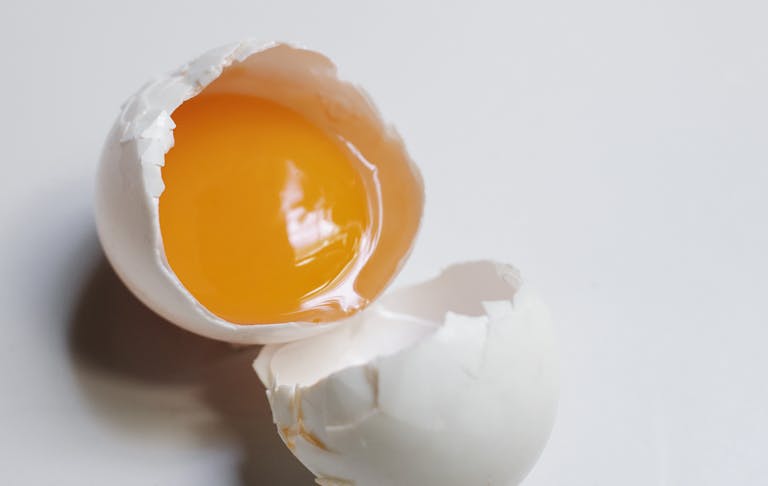What To Feed Moulting Chickens
When your hens start moulting, it’s not just their feathers that change; their nutritional needs shift too. Moulting can put a real strain on a bird’s system, and giving them the right feed during this period is essential for a smooth and healthy recovery.
Why chickens need more protein during moult
Feathers are made of around 85–90% keratin, a tough structural protein. When hens moult, they need to rapidly produce large amounts of this to replace their plumage. That means their usual layers feed, which is designed to support egg production, may no longer be ideal.
In fact, many hens stop laying altogether during a hard moult. Their bodies redirect energy from egg production to feather regrowth. Supporting this process with extra protein helps them rebuild faster and reduces stress on their system. I’ve found that a diet tweak at this stage can really help improve energy levels and overall condition.
How much protein should moulting chickens get?
Most standard layer feeds contain about 16% protein. During the moult, aim for 18–20% protein in the overall diet. You don’t need to change everything, but you should add high-protein elements to help them along.
You can either:
- Switch to a higher-protein feed, like Heygates Specialist Pellets
- Supplement their existing feed with high-protein extras, like Quiko Hobby Farming Eggfood
It depends on your flock’s preferences and how complete your current feed is. I think mixing a proportion of chick crumb into your layer feed works well. It gently boosts protein without making a sudden change. If you do decide to change feed, I suggest doing it gradually. Mix the new and old feeds over several days to help avoid digestive upset and give your birds time to adjust.
Best protein-rich foods for moulting hens
If you’re supplementing, focus on natural, safe protein sources chickens can digest easily. Here are some good options:
- Sunflower seeds (unsalted, in moderation)
- Pumpkin seeds
- Legumes, like cooked peas or lentils
A few of my birds are obsessed with sunflower seeds, so I use those sparingly during the moult. I think they’re a great option when you need a protein boost and a boredom buster rolled into one.
Don’t forget essential vitamins and minerals
While protein is key, don’t neglect the basics. Moulting puts demands on the whole system.
- Vitamin A and E support feather quality and immune function
- Calcium is still needed, even if laying stops — don’t remove grit or oyster shell from the setup
- B-complex vitamins help with energy and tissue repair, especially B2 (riboflavin)
In my experience, a general-purpose poultry tonic, like Verm-X Poultry Zest or Battles’ Poultry Drink, is a simple way to cover any shortfalls. I’ve used them in past moults and found it helps fussy eaters maintain their condition while they’re off lay and recover more quickly.
How often to feed moulting supplements
Keep high-protein extras as treats or short-term support, not a full replacement for balanced feed.
- Offer protein-rich extras 2–3 times a week during moult
- Consider switching to a grower or moulting feed for 4–6 weeks
- Resume layers pellets once feather regrowth is complete and egg laying restarts
I suggest keeping notes on each bird’s behaviour and feather condition — it’s the best way to spot whether your feeding adjustments are helping.
Can moulting affect behaviour?
Yes, and it’s worth preparing for. Moulting hens can become:
- Less social or more irritable
- Less active than usual
- Uninterested in foraging or scratching
- More sensitive to touch, especially around pin feathers
They’re not being awkward, they’re just uncomfortable. I try not to handle them during peak moult unless absolutely necessary. Giving them some extra space, a clean dry run, and access to dust baths can all help.
For more information on moutling read our post: Chicken Moulting Explained: Everything You Need to Know
Final thoughts
Feeding moulting chickens isn’t complicated, but it makes a real difference. A little extra protein, a few simple supplements, and a gradual approach to any feed changes will help your flock come through this patch looking and feeling their best. I always plan ahead before autumn hits, so I’ve got everything on hand when those first tatty tail feathers appear.
Disclosure: This post may contain affiliate links. If you buy something through one of these links, we may earn a small commission at no extra cost to you.
Kevin O’Hara got his first chickens back in 1972. A backyard chicken keeper based in Yorkshire, he created of KeepingChickens.uk back in 2012. With years of hands-on experience, he shares practical, UK-specific advice to help others care for happy, healthy hens. Learn more about Kevin on the author page.






